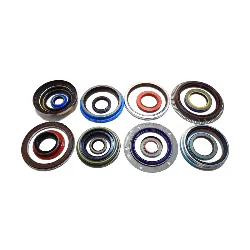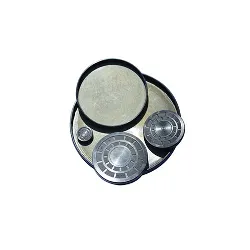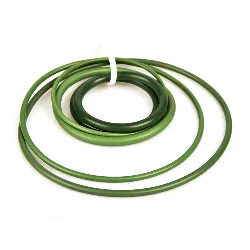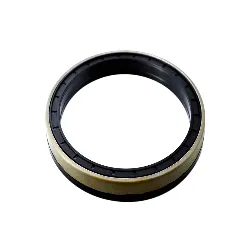When it comes to sealing solutions in mechanical systems, Rotary oil seal and Framework oil seal are two prominent types that engineers often consider. Each type serves specific functions and offers unique advantages depending on the application. This article delves into the key differences between Rotary oil seal and Framework oil seal, providing insights to help you choose the right seal for your needs.
Seals are fundamental components in machinery, essential for preventing leaks and protecting against contamination. The right seal can enhance performance, reduce maintenance, and extend the lifespan of equipment. By comparing Rotary oil seal and Framework oil seal, we can better understand their distinct features and applications.
1. Functional Design
Rotary oil seal are designed to handle rotary motion, effectively sealing shafts that rotate at varying speeds. They feature a flexible lip that maintains contact with the rotating surface, creating a seal that adapts to the shaft's motion. This dynamic sealing capability is crucial for applications where continuous rotation occurs.
Framework oil seal, or oil seals, incorporate a metal skeleton within their elastomeric body. This metal insert provides structural support, ensuring the seal retains its shape and performs effectively under pressure. Framework oil seal are versatile, suitable for both rotary and stationary applications, offering a broader range of uses compared to Rotary oil seal.
2. Material Selection
The materials used in Rotary oil seal are chosen for their ability to withstand the stresses of rotational motion. Common materials include nitrile rubber (NBR), which offers good resistance to oils and wear, and fluoroelastomer (FKM), known for its high-temperature and chemical resistance.
Framework oil seal combine elastomeric materials with a metal skeleton. This combination allows them to endure higher pressures and mechanical stresses. The elastomer provides flexibility and sealing capability, while the metal skeleton offers rigidity and structural support, enhancing the seal's overall performance in demanding conditions.
3. Performance Characteristics
In terms of performance, Rotary oil seal are optimized for applications with high rotational speeds and frequent motion. Their design minimizes friction and wear, ensuring a reliable seal over time. Rotary oil seal are particularly effective in hydraulic systems, pumps, and motors where maintaining a tight seal on a rotating shaft is essential.
Framework oil seal offer superior performance in terms of structural integrity and pressure resistance. The metal skeleton within the seal helps it withstand higher pressures and axial loads, making it ideal for heavy-duty applications. Additionally, Framework oil seal are effective in preventing the ingress of contaminants, further enhancing their reliability and durability.
4. Application Scenarios
Rotary oil seal find their primary applications in systems with rotating shafts. These include automotive powertrains, industrial gearboxes, and hydraulic machinery. Their ability to maintain a seal despite continuous motion makes them indispensable in such settings.
Framework oil seal, due to their reinforced design, are suitable for a wide range of applications. They are commonly used in automotive engines, where they seal rotating crankshafts and camshafts. Additionally, Framework oil seal are found in industrial machinery, home appliances, and other equipment requiring robust sealing solutions.
5. Installation and Longevity
Installing Rotary oil seal requires precision to ensure proper alignment with the rotating shaft. Misalignment can lead to increased wear and reduced seal life. Regular inspection and maintenance are necessary to ensure optimal performance and prevent leaks.
Framework oil seal are generally easier to install due to their rigid structure. The metal skeleton aids in maintaining the seal's shape during installation, reducing the risk of misalignment. This rigidity also contributes to the seal's longevity, making Framework oil seal a reliable choice for applications where long-term durability is critical.
The decision between Rotary oil seal and Framework oil seal hinges on the specific needs of your application. By understanding the unique characteristics of each seal type, you can make an informed choice that ensures optimal performance and longevity for your mechanical systems.












